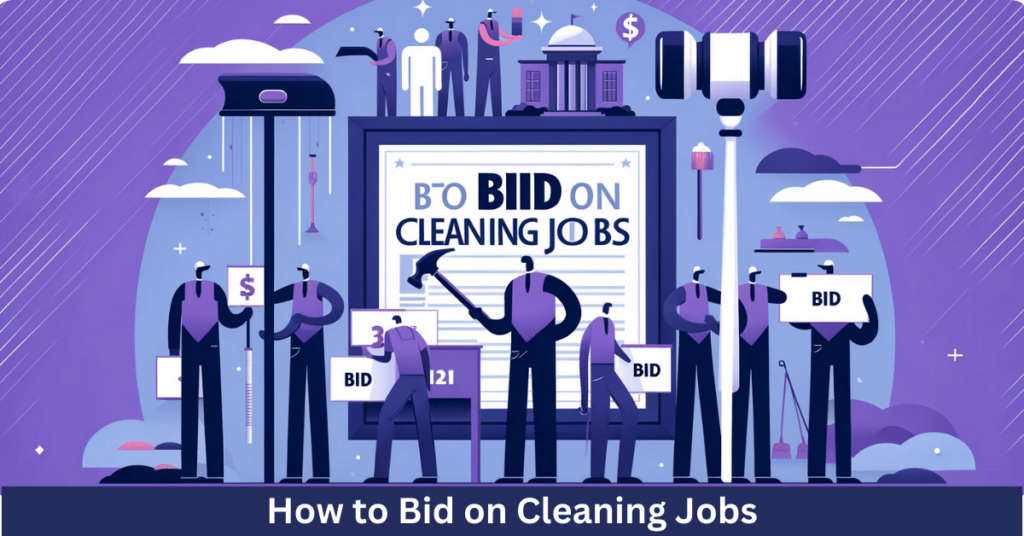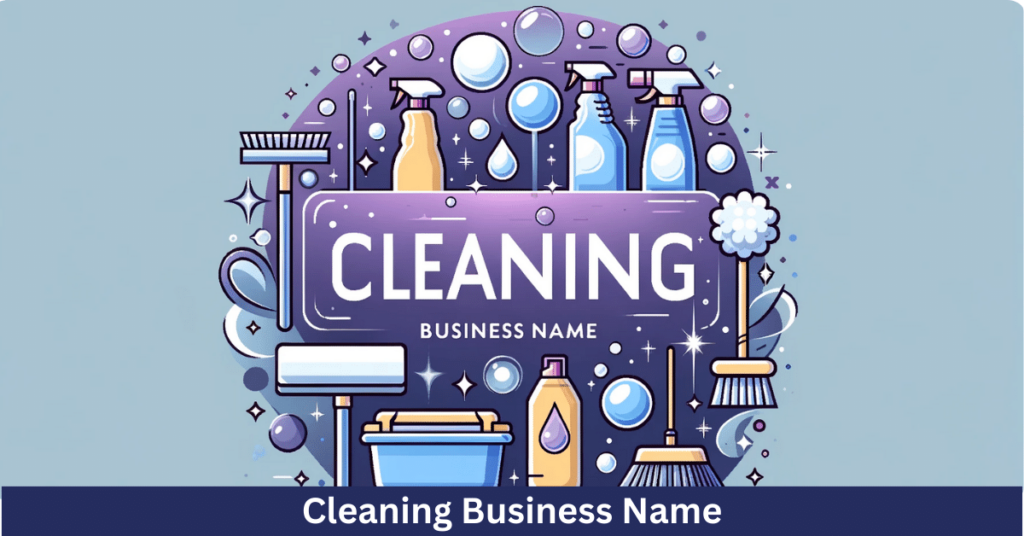Whether you are a newbie or a seasoned professional in the cleaning industry, bidding on good contracts is always a challenging thing to do.
No one can deny the importance of impactful bidding in the success of a cleaning business.
Yes, having a solid marketing team helps a lot; but if you want to sustain and make your name in the industry, you need to grab some additional cleaning contracts.
Besides, a cleaning bid helps you build your clientele instantly. For instance, you can offer your unique selling point to potential clients directly in your bid and convince them to work with you.
That’s why bidding is considered the best way to strengthen your portfolio and expand your business.
So, if you want to see those mops mopping all the time, you need some tips and tricks to bidding on a cleaning job effectively. In this article, we will discuss the bidding process for cleaning contracts step-by-step, so keep reading.

Step 1: Choosing the Clients for Your Cleaning Business
The first step is to figure out who you wish to work with/for. By doing so, it will become easier for you to focus on the types of contracts you really want and then make efforts to win them.
In the cleaning industry, clients are usually categorized into two types:
- Commercial Cleaning Clients: These include colleges, schools, gyms, offices, factories, supermarkets, retail stores, bars, and restaurants.
- Residential Cleaning Clients: These include personal houses, model homes, etc.
As a cleaning business owner, the ball remains in your court; either you want to choose one category to excel in or both.
Your progress towards making a bid starts as soon as you pick up your client niche. That’s because, in residential cleaning, services are generally charged at an hourly rate, while in commercial cleaning, the payment is made on a flat fee.
If you feel stuck on this step and don’t know which category to choose, we suggest asking yourself the below three questions.
1. Can You Do the Job Alone, or Do You Need a Team?
If you’re a single entity, you can’t clean up a large-scale restaurant or office single-handedly. Even if you acquire superpowers, it will be practically impossible for you to carry out a commercial cleaning job without going fully drained.
Let’s suppose you still take a commercial cleaning project alone.
If you charge a monthly flat fee for the job, there is a chance that you may have to work for more hours than you initially calculated.
On the contrary, if you agree on the hourly rate, your fees would be much higher than other cleaning companies since you’re working alone.
So what should be the best decision here?
Simply go for the house cleaning job. That’s because the total hour estimation for a single standard-sized house is usually easy-to-do, and you can solo clean it quite comfortably.
2. Which Type of Business Insurance Do You Have?

Business insurance or coverage can save you from the troubles at a time of despair.
In case you accidentally break a client’s property or possession while doing your job, business insurance protects you from getting sued.
That’s why business coverage is an essential thing to have before you go bidding on clients.
Besides, you should watch out whether you have full coverage insurance or not. Usually, an office cleaning job requires more coverage than a house cleaning job as you’re dealing with costly equipment there.
So, decide wisely.
3. Commercial Cleaning Job or Residential Cleaning Job?
To make your place in the cleaning industry, you have to look for the gaps created by your competitors. Once you identify those inefficiencies, you can then make your way up to them.
This way, your bid stands apart from the ordinary ones.
Think about it like this – you live near a rural area. The first thing that comes to a creative cleaning businessman’s mind is introducing the modern urban cleaning facilities there.
Of course, people there would already know the traditional way of cleaning their homes. Yet what they won’t know is how to do it instantly and effectively. That’s where you can take an edge over your competitors and sell them your advanced services.
Similarly, if you’re operating in a suburban area, you must choose commercial cleaning jobs, instead of residential cleaning which almost all businesses would be bidding for.
So research thoroughly and see where there’s less competition and a better chance for you to offer your services.
Step 2: Finding the Clients in the Right Places
The next step is to know the right places to find potential clients.
Besides finding the clients directly, you can also make yourself more visible through word-of-mouth. Wondering how? Let’s make it easy for you.
Commercial Real Estate Offices
Local commercial real estate offices in your area play a huge role in advertising your services. This is because they are in continuous contact with several people from the business community.
So if you partner up with a commercial real estate office, they will offer your cleaning services to their customers, helping you grab more clients.
Be a Walking Advertisement
Honestly, there is nothing wrong with promoting your cleaning services. So go to that diner on the corner of the street or talk to small vendors and tell them about your cleaning business.
Even if they don’t need your services, they can at least recommend you to someone in their circle.
Use Direct Mail
Where other cleaning businesses try to reach out to their clients indirectly, you can cut to the chase and mail them directly. This is the best way to build your clientele and maintain your existing customers.
However, make sure to sound professional in your flyers or emails. Plus, make sure to include your contact number and detailed info about your services.
Reach Out to Schools and Shopping Centres
Commercial areas, including private or public schools, restaurants, and shopping centers, have the highest demand for cleaning services. This means you can find your clients easily in these areas.
However, these cleaning contracts are hard to win. Yet, they can give your business profile an instant boost that usually requires years to accomplish.
Besides, these places are just to start with; you can find clients in more areas if you put in some hard work.
So, what to do once you grab the attention of the customers? First, do a walkthrough of the contract and then quote your price. The next step will discuss how you can do that.
Step 3: Examining the Requirements of the Cleaning Contract

A comprehensive walkthrough gives you the closest idea about the project that you’re going to bid for. It includes the area you’re going to clean, your client’s needs, and how you can satisfy them by going the extra mile.
More importantly, it helps you in quoting your price according to the project’s requirements.
Obviously, you don’t want to end up quoting a price for a 2100 sq. ft home, while the contract actually includes a 3200 sq. ft home.
Here are all the things you should watch out for before quoting your price for any cleaning contract:
Make a List of Essential Things
If the project requires any cleaning equipment other than your usual jobs, you should list all of them down in a notebook. That’s because the costs of these cleaning supplies also get included while quoting a price.
Measure the Area Correctly
It would be better if you bring a measuring tape to determine the actual square footage of the area you’re about to clean.
Plus, note down how many rooms need cleaning, including the number of bedrooms, bathrooms, and kitchen (kitchens usually require an intensive wash).
If you’re bidding on commercial cleaning contracts, don’t forget to add the desks, carpets, hardwood, and glass equipment to the list.
Mention If You Have to Make Extra Efforts
Some buildings have unique layouts or infrastructures, which could make it hard for you to clean. For instance, if your client lives in a house with vaulted ceilings, you’ll need a ladder to clean them.
So, if the project requires you to go out of your way, you should mention it in your job quote.
Note Down Client’s Special Requests
Mostly, clients have special demands that they don’t mention in their bid offer. So, you should note these requests along with their costs while quoting your bid price.
The key to do a practical walkthrough is to stay thorough and precise. If you, by any reason, forget to note any significant detail, you may end up displeasing your client. This, in turn, means less payment than your expectations.
Step 4: Pricing the Cleaning Job Bid Accurately

The final step is to quote the right price for your cleaning job bid.
For that, you have to take help from the notes you made in the walkthrough. After that, you need to determine whether you want to charge at an hourly rate or flat fee.
Don’t start scratching your head if you can’t make a decision; here’s how you can make a thorough analysis of what you need.
Charging at an Hourly Rate
First of all, you should estimate the number of hours it will take you to complete the cleaning job.
For that, make a list of all cleaning tasks included in the job, from big ones to the small ones. Then, write down the estimated time durations that each task will require. Like wiping the windows may take 20 minutes, cleaning the kitchen can require 30-40 minutes.
Do this with all of the remaining tasks.
After that, you have to add the hours to estimate the total time duration required to complete the entire project.
Then just quote your price to the bidder by multiplying your hourly rate with the number of hours you’ve obtained.
Besides, if you want to play smartly, you’ve to give yourself a half an hour margin. You can’t know if you can actually complete the job within the estimated time or not.
So, if you calculated 2 ½ hours, you should quote the price for 3 hours.
Charging a Flat Fee
Charging a flat fee or charging by the job goes into the favor of both you and your client.
When you give your client the total price at the start of the project, they know what they have to pay to get the job done, not a dollar more or less.
Similarly, you can make more money if you complete the project in fewer hours than you anticipated initially.
To determine the flat fee for a specific bid, you have to first calculate its total cost based on the hourly rate and then add a slight mark-up to it.
However, charging a flat fee can become less fruitful if you estimate the wrong number of hours and end up working more. This means you will receive the same payment you quoted to your client at the start of the project, even if it took longer to clean.
Besides, no matter which pricing method you choose, ensure that your quoted price reflects everything you’ve included in it.
If you are more specific and honest with your clients, you will ultimately increase your chance of landing a cleaning job with them again.
The Bottom Line
The cleaning business clients prefer bids that are simple, comprehensive, and straightforward.
So no matter if you choose commercial cleaning or residential cleaning, you have to simplify your janitorial services to your clients and assure them that you have exactly what they want.
Frequently asked questions
Have some questions about your cleaning business, see below for some commonly ask questions
Glassdoor reports that cleaning business owners usually make $36,000 a year on average, while their employees make $24,000. Besides, the money you can possibly make from the cleaning business depends on multiple factors, including your business’s size, clientele, and competition.
If you become successful, you can even make between $60,000 and $100,000 per year!
Residential cleaning includes homes, model homes, and vacation homes, while commercial cleaning includes restaurants, bars, offices, schools, etc.
Well, the answer depends on how correctly you estimated the total hours required to complete a job.
For example, suppose you calculate fewer hours than the actual number. Then, if you opt for the hourly rate method, you will receive the price as per your working hours. But, on the other hand, you may lose a hefty amount of dollars if you choose the flat fee.





